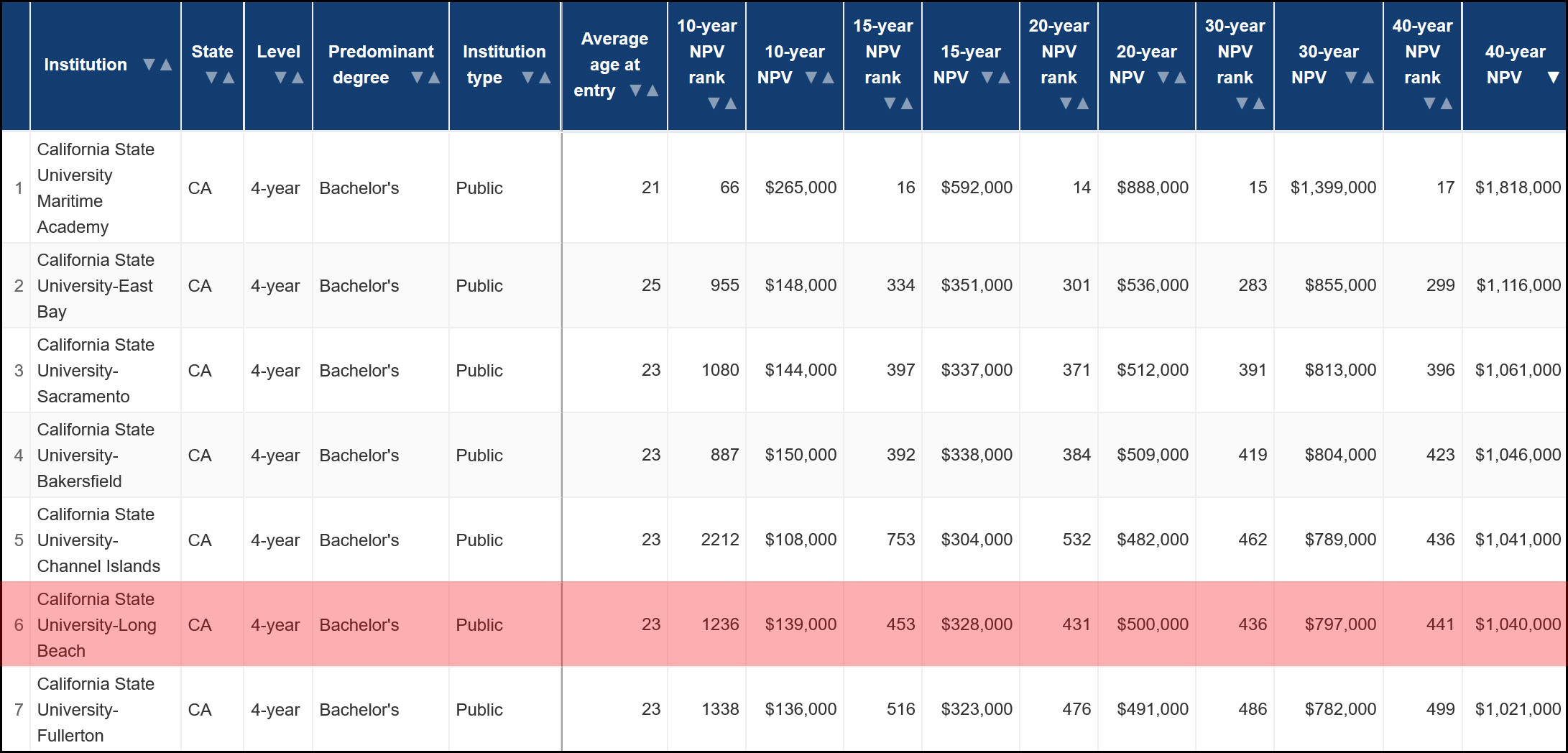
Engineering students from the class of 2019 graduate at CSU Long Beach.Brittany Murray/SCNG via ZUMA
Do you have a college degree? Do you ever wonder about how worthwhile it really is, moneywise? Wonder no more. A team of boffins at Georgetown University has created a database of universities that ranks the average value of graduating as measured by net present value.
I graduated 38 years ago, so the 40-year NPV is the best measure for me. Here it is:

Not bad! I’ve earned a million extra bucks thanks to my degree from Cal State Long Beach. This narrowly beats out the local competition at CSU Fullerton but lags the performance of the shiny new CSU Channel Islands campus. Out of a total of 4,529 schools in the database, CSULB ranks 441st. I find this a little surprising, though I can’t say for sure why.
As it turns out, the highest NPV comes from schools that specialize in pharmacy and maritime degrees. This doesn’t surprise me a lot, since any school that specializes in a particular field is likely to have a higher average than a school that offers degrees in lots of subjects, including those that don’t pay especially well. (Unless the school specializes in a low-paying field, of course, like theology.)
In any case, it turns out that CSU schools do only slightly worse than UC schools. So if it’s money that interests you, and you live in California, you might want to think about attending your local CSU university and calling it a day. They’re easier to get into, easier to graduate from, and cheaper to attend. What more could you want?

















